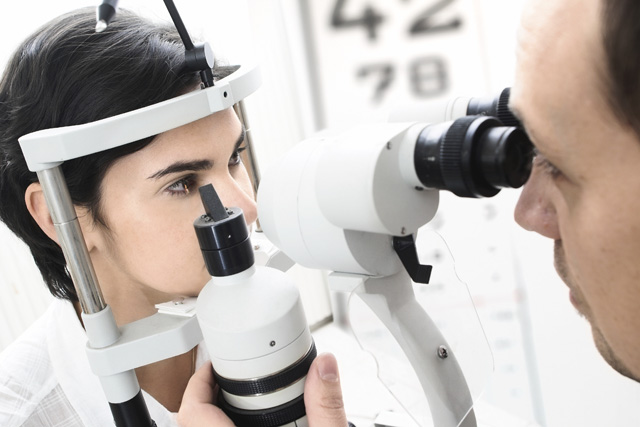
A regular eye exam is the best way to protect your eyesight—and an easy precaution to take. It is particularly important if you notice a change inyour vision, if your eye is injured in any way, or if you have a family history of eye disease.
What to Expect at an Eye Exam
Each optometrist is different, but most eye exams follow a similar pattern. First, they will review your personal and family health history – checking for special risk factors like eye disease, diabetes, high blood pressure or poor vision.
Then, they’ll conduct tests to check for:
-
Vision - The optometrist will check for shortsightedness (myopia), longsightedness (hyperopia), and astigmatism. While you look at an eye chart, they will measure your vision precisely, and, if necessary, determine a prescription for corrective lenses.
-
Coordination of eye muscles - The optometrist will move a light in a set pattern to test your ability to see sharply and clearly at near and far distances, and to use both eyes together.
-
Side (peripheral) vision - The optometrist will move an object at the edge of your field of vision to make sure you can see it.
-
Pupil response to light - The optometrist will shine a light in your eye and watch the pupil's reaction.
-
Colour testing - The optometrist will ask you to describe figures in a series of illustrations made up of numerous coloured dots or circles. This tests your ability to differentiate colours.
-
Eyelid health and function - The optometrist will examine your eyelid, inside and out.
-
The interior and back of the eye - After dilating your eyes (by both using a few eye drops and dimming the lights so the pupils will widen), the doctor will use a special instrument called an ophthalmoscope to see through to the retina and optic nerve at the back of the eye
-
Measurement of fluid pressure - The doctor will release a puff of air onto your eyeball using an instrument called a tonometer. This tests the pressure inside the eyeball, an early indicator of Glaucoma and other diseases.
Test Your Vision
This is not a substitute for a complete eye exam by a doctor – but it may help you discover a vision problem that requires professional attention. You will need a friend to help you, so grab someone and try it!
-
Print out the Snellen Eye Chart(17.3 KB, PDF)
-
Tape it on a bare, windowless wall approximately 4 feet from the ground.
-
Sit in a chair 10 feet from the wall. If you normally wear contact lenses or glasses, wear them for this test.
-
Ask your friend to hold a cover (such as a handkerchief or paper cup) over one of your eyes and use a torch to point at each line of the chart, starting at the top. Keeping both eyes open, read each letter out loud as your friend points.
-
Record the number, such as 20/20, of the smallest line you can read correctly.
-
Repeat steps four and five with the other eye.
You should be able to read the 20/20 line with both eyes; if you can't, you may want to ask your eye care professional about vision correction options.